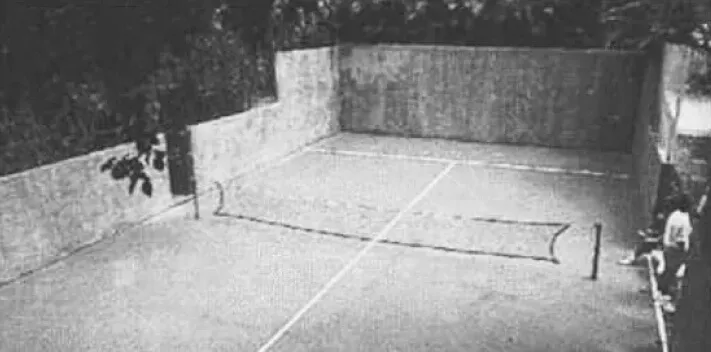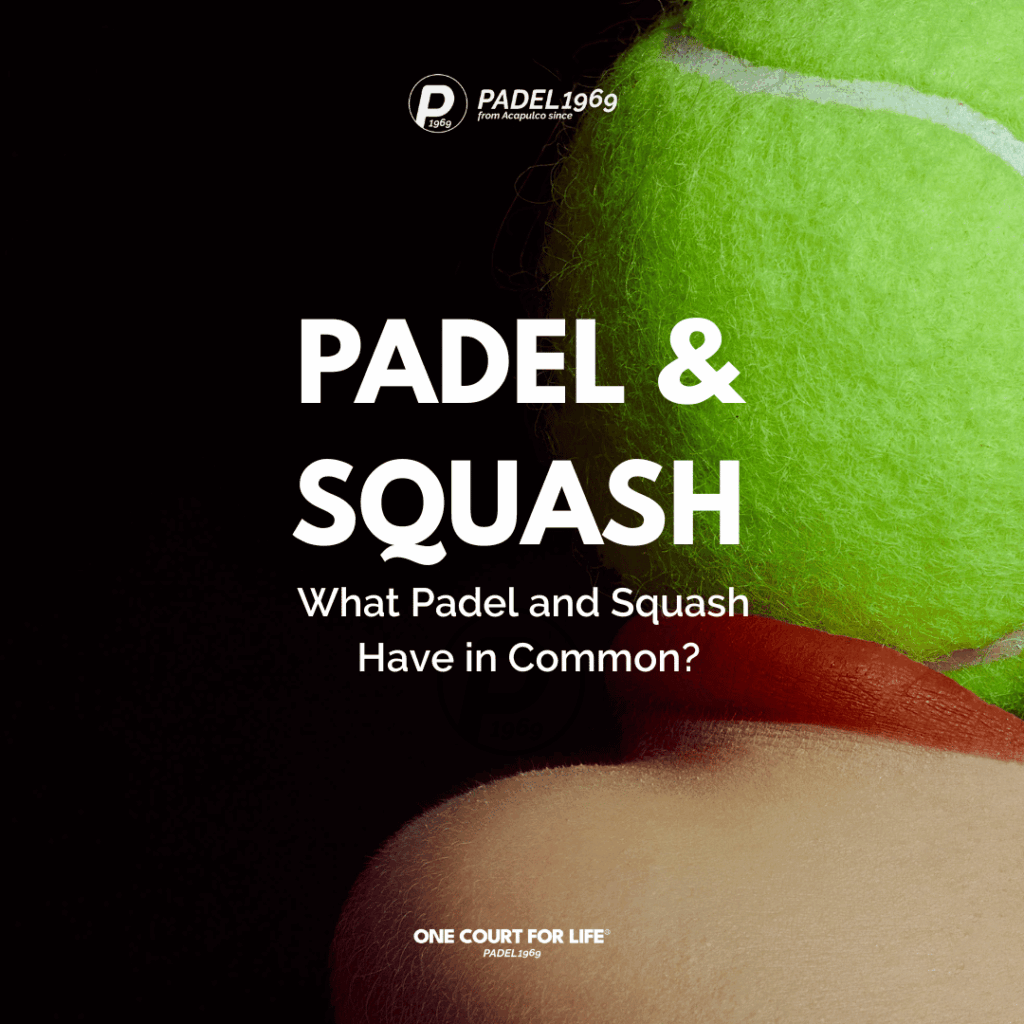What the Past Teaches Us About the Future
Author: Atte Suominen, Founder & CEO of PADEL1969
In the world of racquet sports, few stories are as fascinating as the rapid rise of padel. But to truly understand where padel is headed, it’s worth looking back at the remarkable path carved out by another glass-walled game: squash.
Though very different in gameplay, squash and padel share more than you might think. Both began as niche alternatives to tennis, both spread rapidly through urban and club networks, and both developed strong community cultures.
So, what can the history of squash teach us about how to scale padel responsibly and sustainably? Let’s dive into their origins, growth stories, similarities – and the critical differences that will shape padel’s future.
Origins: Two Very Different Stories
Squash – From English Schools to Global Clubs
Squash traces its roots back to early 19th-century England, when students at Harrow School began playing a variation of rackets in a narrow court where the ball “squashed” against the wall. The game quickly caught on in British schools and was formalized with rules by the late 1800s.
Its popularity expanded throughout the British Empire, becoming particularly strong in countries like Egypt, Pakistan, Australia, and Canada. By the 1970s and 80s, squash had become a dominant racquet sport in private clubs, universities, and urban gyms, especially in the UK and the USA.
At its peak, squash had an aura of exclusivity – considered a sport for professionals and the athletic elite.

Padel – Born in Mexico, Perfected in Spain
Padel has a more recent and almost accidental origin. In 1969, Mexican businessman Enrique Corcuera built a modified tennis court at his home in Acapulco. To prevent balls from bouncing out, he enclosed the court with walls, inadvertently creating the prototype for modern padel.
It was a Spanish friend, Alfonso de Hohenlohe, who brought the idea to Spain, where the sport exploded—especially in Marbella and later across the country. Argentina soon followed, and padel became deeply embedded in Latin culture before making its way into Europe and the Middle East.
Unlike squash, padel started from leisure and fun, not tradition or elitism. That mindset remains core to the sport’s DNA today.

Parallel Growth Patterns – Then and Now
Despite different starting points, squash and padel have followed remarkably similar growth arcs. There are plenty of similarities not only because they are both racket sports but also due to their way to be both very fun and dynamic sports. Nature of both 3D racket sports are generating plenty of good hormones quickly and making them relatively addictive.
Urban Appeal
Both sports thrived in cities due to their compact court requirements and intense, time-efficient workouts.
Community-Driven Culture
Each built a strong social culture around the game. Squash clubs were known for post-game drinks and networking. Padel clubs today are becoming hubs for fitness, family fun, and lifestyle.
Institutional Buy-In
Squash was adopted by top universities, private clubs, and corporate wellness programs. Padel is now entering hotels, holiday resorts, municipalities, and high-end real estate developments worldwide.
Comparison Table: Squash vs. Padel
| Category | Squash | Padel |
|---|---|---|
| Year of Origin | ~1830s (England) | 1969 (Mexico) |
| Court Dimensions | 9.75m x 6.4m, indoor only | 20m x 10m, indoor or outdoor |
| Walls | 4 walls, opaque | Back and side walls, fully transparent glass |
| Gameplay Style | Fast-paced, solo reflex game | Strategic, cooperative doubles game |
| Learning Curve | Moderate to steep | Very shallow – accessible from day one |
| Primary Format | Singles (mostly) | Doubles (almost exclusively) |
| Social Experience | Club-focused, competitive | Lifestyle-driven, inclusive, family-friendly |
| Spectator Appeal | Low – visibility issues | High – glass courts and dynamic rallies |
| Olympic Status | Approved for LA 2028 Olympics | Not yet approved – under strong consideration |
| Global Popularity Peaks | 1980s–1990s, soon again? | 2020s–present |
| Top Markets (Historically) | UK, Egypt, Pakistan, Australia | Spain, Argentina, Sweden, Italy, Middle East |
| Current Growth Regions | Stable or declining | Explosive growth in Europe, Middle East, Africa |
| Tech & Media Integration | Limited historically | High – apps, video, digital scoring |
Squash Joins the Olympic Family: What It Means for Padel
In 2023, squash was officially approved to be part of the Los Angeles 2028 Olympic Games. Squash was named among the five additions to the LA 2028 Olympic Games and this is great news for the future development of Squash within next generation. This decision came after years of campaigning by the global squash community, driven by:
- A strong international federation (WSF) with unified support
- A proven history of global competition and rankings
- A clear case for inclusivity, accessibility, and gender equity
- Renewed interest in sports that are compact, intense, and youth-friendly
- The sport’s efforts to modernize its image with glass show courts and digital media
This Olympic nod is a powerful moment for squash. It gives the sport visibility, funding, and legitimacy – especially in developing countries where Olympic status often shapes government investment.
For padel, it’s also a signal. The door is open.
Padel is arguably more TV-friendly, more accessible, and growing faster than squash did at any point in its history. But to follow squash into the Olympic program, padel must:
- Strengthen international governance
- Align professional tours under a unified voice
- Build global youth and grassroots programs
- Host high-quality, media-friendly global tournaments
- Demonstrate gender equity in both access and opportunity
If these building blocks fall into place, padel could realistically be included in the Olympics as early as 2032 in Brisbane Australia or 2036.
On 13th of June 2025 International Olympic Committee (IOC) President Thomas Bach was visiting, meeting top players and watching their matches in Rome at Italy Major Premier Padel tournament. This represent an important milestone for Padel and its process to become an Olympic sport in the future.
Learn more from our article “Padel is Officially Olympic Sport in the Future” what is the criteria to become Olympic Sport and why it can take longer than Padel fans are expecting.
What Padel Can Learn From Squash’s Rise and Fall
Visibility Matters
Squash struggled with low spectator appeal due to opaque walls and high ball speeds. Padel benefits from transparent courts and entertaining doubles play – but still must invest in padel club quality, fan engagement, and shareable content.
Youth Pathways Are Crucial
Squash’s lack of accessible youth programs limited its long-term growth. Padel must double down on junior development, school partnerships, and affordable equipment to nurture a generation that grows up playing the game.
Unity Drives Legitimacy
Fragmentation held squash back. For padel, cooperation between FIP, Premier Padel, national federations, and private operators will be essential, particularly in making the case for Olympic inclusion.
Infrastructure and Experience Win
Squash peaked within elite clubs. Padel is spreading through a wider network of destinations – holiday resorts, public parks, multi-sport centers. But to retain players, the surrounding experience must evolve with the times: digital, social, service-driven, and community-focused.
Final Word: Learn from Yesterday, Build for Tomorrow
At PADEL1969, we help clubs and investors not only install courts – but build profitable, vibrant padel destinations. Helping over 120 entrepreneurs to invest in Padel has given us experience what can go wrong and how to do thing right. By studying the journey of squash, we gain invaluable insights into what to do – and what to avoid.
Squash’s recent Olympic breakthrough is well-deserved and long overdue. At PADEL1969 we think that it also offers a clear blueprint for padel’s future on the world stage.
Padel has every ingredient to go further than squash ever did: it’s more social, more inclusive, easier to learn, and far more suited for media and commercial ecosystems. But global success isn’t still not yet guaranteed. Learn more Where is Padel heading?
It will require thoughtful planning, strategic investment, and a united effort to keep the sport accessible, engaging, and inspiring for decades to come.
Let’s build with perspective.
– Atte Suominen
Need advice about in investing in Padel sector?
Book a call with us if you want to build a Padel court and don’t know where to start, or contact us at [email protected] for more on our advisory services.
PADEL1969 | from Acapulco since 1969.


